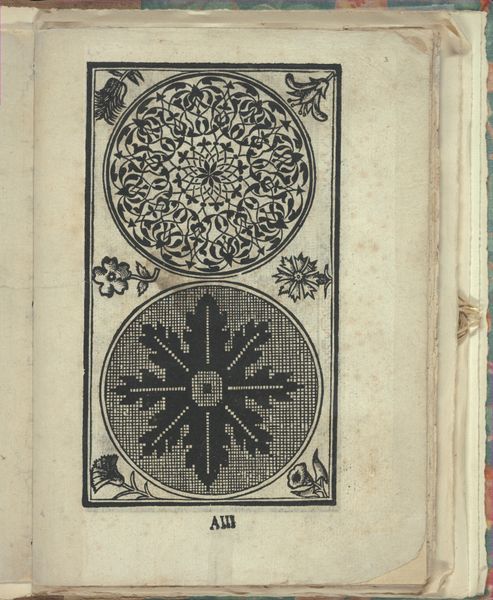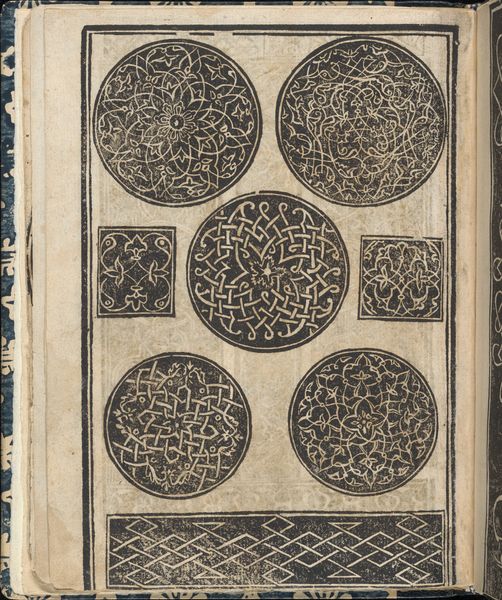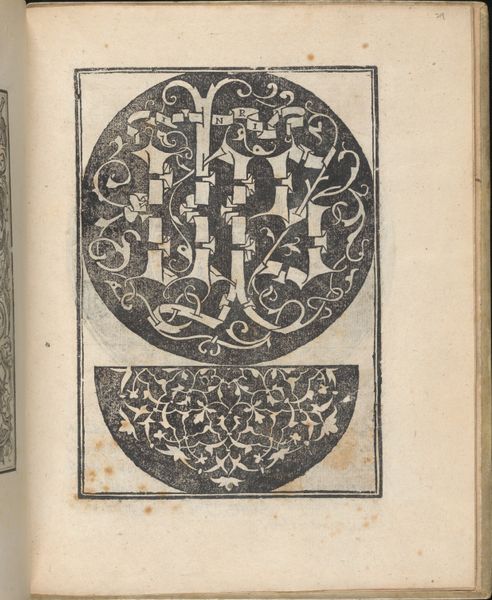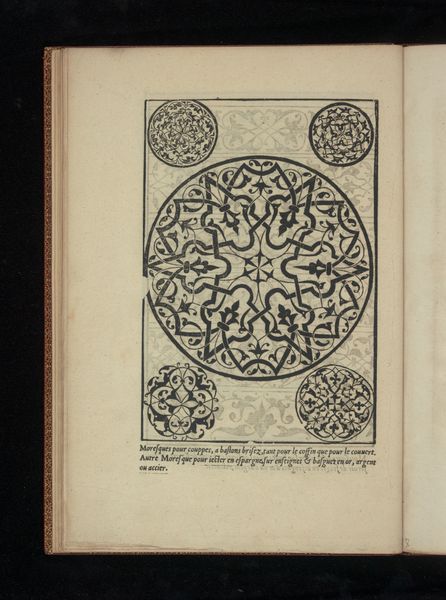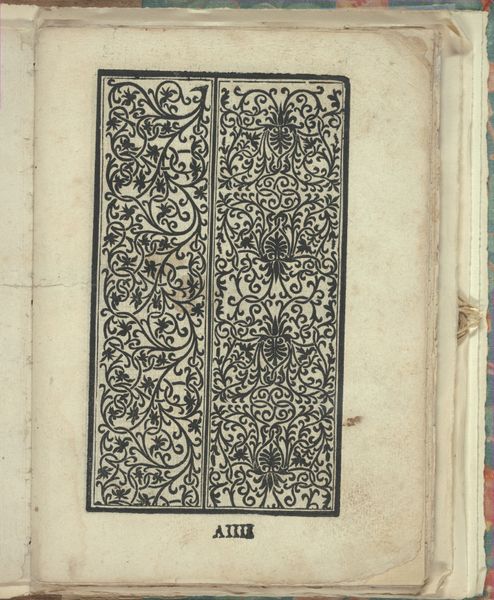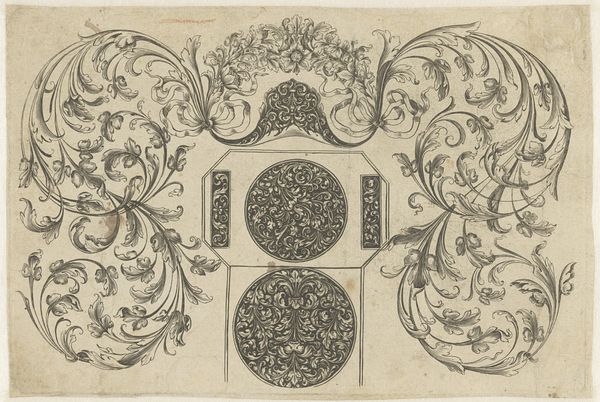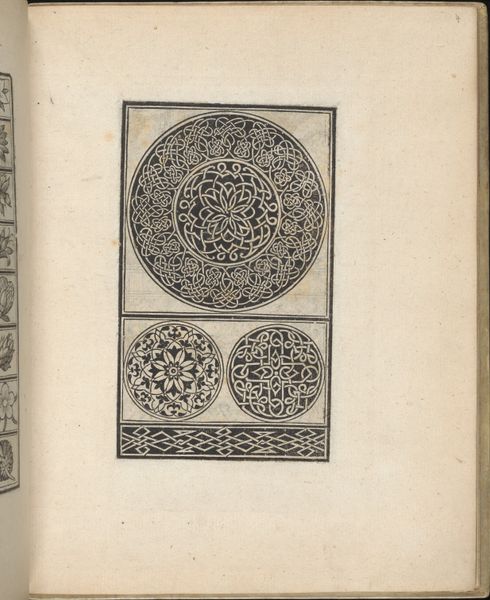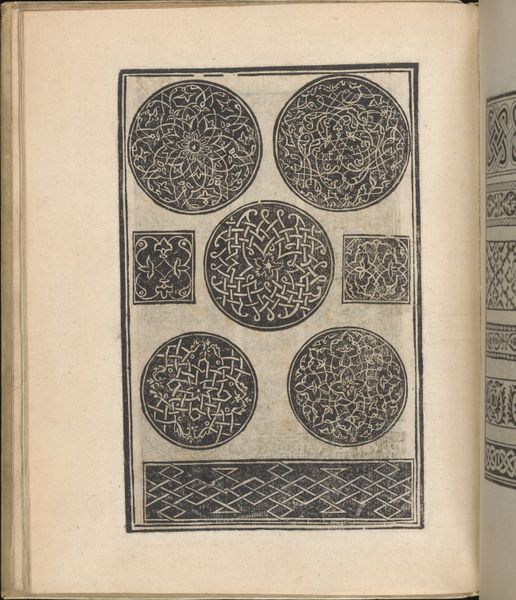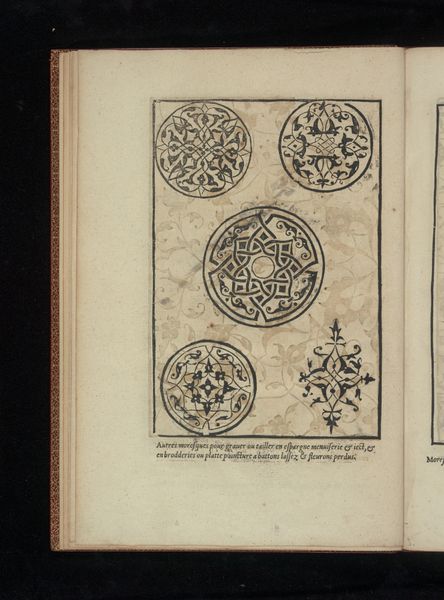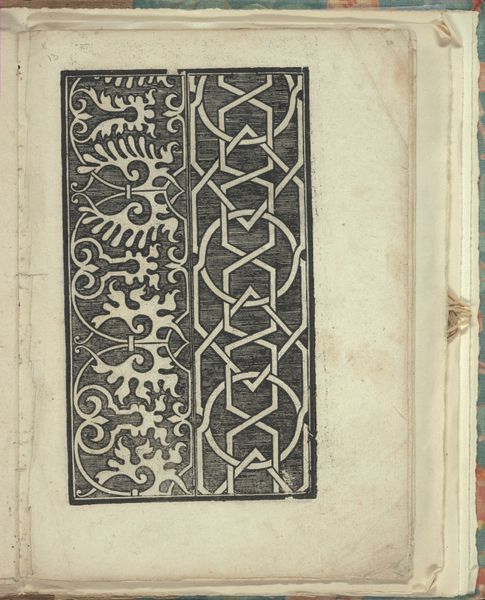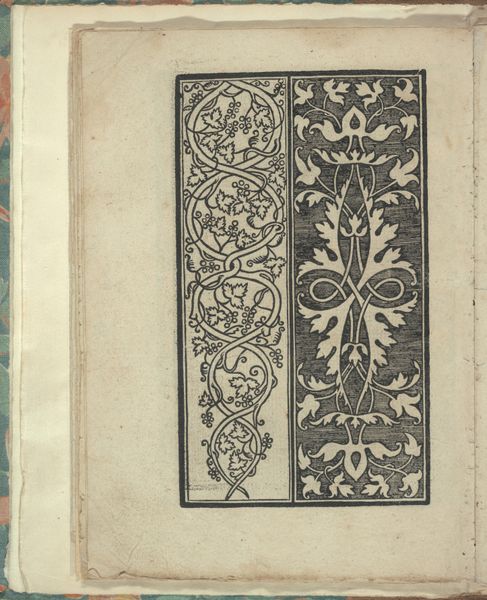
Opera Nova Universali intitulata Corona di racammi, page 28 (recto) 1530
drawing, graphic-art, print, engraving
drawing
graphic-art
11_renaissance
geometric
line
italian-renaissance
engraving
Dimensions: Overall: 8 7/8 x 6 7/8 in. (22.5 x 17.5 cm)
Copyright: Public Domain
Curator: Here we have a page from Giovanni Andrea Vavassore’s “Opera Nova Universali intitulata Corona di racammi,” dating to 1530. It’s a print, an engraving to be precise, now residing in the Metropolitan Museum. Editor: My eye is immediately drawn to the contrast. It feels so formal, almost mathematically precise in those circular patterns, and then you have the almost grotesque image of a heart pierced by arrows and topped with eyes. It is a striking juxtaposition of design and very raw human emotion. Curator: Indeed, Vavassore's work exemplifies the Italian Renaissance's complex relationship with design and society. These pattern books were critical in disseminating designs for embroidery and lace, crucial for the booming textile industry and the burgeoning middle class eager to display its prosperity. Editor: The circles, repeated with slight variations, remind me of mandalas, visual tools meant for reflection. Do you think there's a deeper symbolism at play, beyond just templates for embroidery? Curator: Absolutely. Consider the peacock—a symbol of pride, vanity, but also of resurrection and immortality. It speaks to a culture grappling with its identity, balancing Christian morality with a revival of classical ideals. The pierced heart...that's potent imagery. It clearly embodies suffering but the addition of eyes makes one consider pain’s witness, the emotional exhibition in heartbreak. Editor: The patterns are fascinating. So much intricate knotwork; it appears in various cultures to signify the interconnectedness of life. And notice how even in those seemingly rigid geometric shapes, there are floral motifs that represent the natural world intertwined. Curator: Vavassore provided designs to artisans eager to replicate the elaborate tastes of the court. But beyond that, they document the shifting social landscape. By creating readily reproducible patterns, art moved away from elite circles. Editor: This artwork gives insight to the aesthetics of its era and the social tensions percolating. It's a pattern book but contains within, a reflection on beauty, mortality, and love. Curator: Exactly, it's far more than a collection of embroidery patterns. It shows the dawn of accessible art and documents that period with all the attendant anxieties and aspirations.
Comments
No comments
Be the first to comment and join the conversation on the ultimate creative platform.
